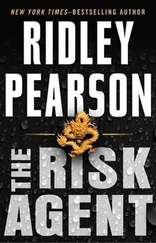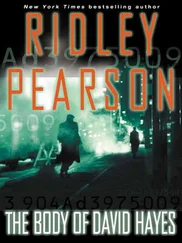Ridley Pearson - The First Victim
Здесь есть возможность читать онлайн «Ridley Pearson - The First Victim» весь текст электронной книги совершенно бесплатно (целиком полную версию без сокращений). В некоторых случаях можно слушать аудио, скачать через торрент в формате fb2 и присутствует краткое содержание. Жанр: Триллер, на английском языке. Описание произведения, (предисловие) а так же отзывы посетителей доступны на портале библиотеки ЛибКат.
- Название:The First Victim
- Автор:
- Жанр:
- Год:неизвестен
- ISBN:нет данных
- Рейтинг книги:3 / 5. Голосов: 1
-
Избранное:Добавить в избранное
- Отзывы:
-
Ваша оценка:
- 60
- 1
- 2
- 3
- 4
- 5
The First Victim: краткое содержание, описание и аннотация
Предлагаем к чтению аннотацию, описание, краткое содержание или предисловие (зависит от того, что написал сам автор книги «The First Victim»). Если вы не нашли необходимую информацию о книге — напишите в комментариях, мы постараемся отыскать её.
The First Victim — читать онлайн бесплатно полную книгу (весь текст) целиком
Ниже представлен текст книги, разбитый по страницам. Система сохранения места последней прочитанной страницы, позволяет с удобством читать онлайн бесплатно книгу «The First Victim», без необходимости каждый раз заново искать на чём Вы остановились. Поставьте закладку, и сможете в любой момент перейти на страницу, на которой закончили чтение.
Интервал:
Закладка:
‘‘We can use that? Sixteen hours?’’
‘‘The presence of diatoms and barnacle larvae attached over the bacterial colonies confirms this, yes. All the work done by the students has been double-checked. Sixteen to twenty hours. That’s your window of time.’’
‘‘No more, no less,’’ Boldt repeated while taking notes. ‘‘Just maybe, you’ve saved this investigation.’’
‘‘We’re not through.’’
‘‘No?’’
Rutledge challenged Boldt, ‘‘We’ve looked carefully at those bales of polarfleece fabric and the way that they were sealed, and it presents an interesting possibility.’’
‘‘I’m listening.’’
Rutledge answered, ‘‘What if this particular container was never intended to reach a dock, but was supposed to be transferred at sea? Such a transfer is exceptionally dangerous. Your organizer planned for this, bought himself insurance by using those bales as internal flotation in case a container leaked water. Those bales are effectively huge balloons.’’
‘‘He’d lost one before?’’ Boldt said, noting Rutledge’s expression.
‘‘Let me just say that even with enough flotation to keep it from sinking, even in calm waters, I wouldn’t want to have been inside that container. If they attempted this in the storm we had the other night-’’ He didn’t bother completing his thought.
‘‘If they did attempt it during the storm,’’ Boldt said, ‘‘could you tell me where ?’’
Indicating the paper Boldt had provided, Rutledge said, ‘‘These are the coordinates where it was found?’’
‘‘The first is approximate, noted by the plane that spotted it. The second was provided by the Coast Guard: exact time and GPS location of the intercept.’’
Rutledge approached his maps. He wore wrinkled khakis and leather deck shoes, the same as Boldt. An expert on the waters of Puget Sound, Rutledge pointed to a spot on the surface current map nearly instantly. ‘‘It was first spotted here, recovered here,’’ he said, moving his fingertip an inch west. ‘‘Surface area exposure to wind, weight and the speed and direction of currents will all have affected its course. I can’t give you a specific location, as we have a four-hour window of time within which to work. But what I can do is backtrack its probable drift route for a period of sixteen to twenty-four hours prior to its being spotted to estimate the transfer location. We have satellite images of that storm, weather station records of surface winds, tidal charts and current information for all depths. Plenty of data.’’
‘‘So if I get a list of all container ships that docked twenty to forty-eight hours after this one was spotted-’’
‘‘And you can do that through Port Authority,’’ Rutledge suggested.
Boldt followed the reasoning to its logical conclusion. ‘‘If you can give me a probable location where the transfer was attempted, then we might be able to predict which of the arriving container ships could have been in that area of the Sound during that window of time.’’
Nodding, Rutledge informed him, ‘‘Since we last worked together, we’ve computerized much of the data. Do you remember the model in the Science Center?’’
Several years earlier, Boldt had spent an afternoon testing Rutledge’s predictions on a working model of Puget Sound that accounted for tidal flow and water salinity. Rutledge’s work had been proven flawless. ‘‘Of course I do.’’
‘‘Gone. It’s all done on computer now, and it’s far more accurate. The computer analysis group should be able to give us the exact course that container traveled.’’ He indicated a spot on the map of surface currents. ‘‘My guess is the transfer was attempted in here somewhere.’’ He turned his attention to a stack of bound volumes by his desk and, referencing the map on the wall, selected the third in the stack. The volume contained pages upon pages of computerized maps marked by time and date and containing curving arrows and numbers that clearly indicated tidal current direction and speed. Several times Rutledge referenced the wall chart before leafing several more pages deeper into the images. Then, drawing a gentle curve with his crooked index finger with its long flat nail, and tugging with his lips on the unlit pipe so that it whistled, he concluded, ‘‘Somewhere in here, is my guess.’’ He crossed to the wall chart and declared, ‘‘We’ll have the computers work the real-time data so that wind conditions can be considered for greater accuracy.’’ He stabbed the chart with authority. Rutledge was of an era and a mind to not leave everything to computers. ‘‘But whatever ship lost that container, whatever fool captain was insane enough to attempt a transfer on that, of all nights, he did so right in here.’’ The man drew a small eyebrow of an arc on the map well away from where Boldt might have guessed. He said, ‘‘He was a mile or more out of the shipping lanes.’’
‘‘Does that give me anything to work with?’’ Boldt wondered aloud.
‘‘On-board radar,’’ Rutledge said, suddenly brighter. ‘‘The Port Authority should have had him on radar, but on a night like that, the other ship captains certainly did. You talk to the watch officers of the transiting vessels. They’d have been watching him carefully, since the vessel was well outside the shipping lanes, that would have aroused curiosity. A night like that you remember, believe me. The bridge officers,’’ he paused, drawing on the pipe again, ‘‘they’ll be able to tell you who or what the hell was out there.’’
CHAPTER 10
An all-consuming darkness spread before Melissa so that she moved forward with the caution of the blind. This had developed into a mission, no longer a job, so that as she moved through this darkness quietly and slowly, a knot gripping the center of her chest, drenched in sweat driven to the surface by taut nerves, she also experienced a sense of righteousness.
A gray mouth of a windowlike opening appeared ahead of her, and she approached it cautiously, inching forward in tiny, thoughtful steps, the strap of the camera case slung over her neck and shoulder. This opening accessed a descending conveyor belt of cracked black rubber that smelled horribly sour and hadn’t run in a decade or more. She tucked her five feet two, 103-pound frame into a ball and slipped through the opening and down the conveyor, the unnerving sound of machinery growing ever louder, ever closer, her fear manifested as a sharp pain at her temples, and pricking her searching eyes. The fear resulted not only from awareness of her predicament but also from the knowledge that she had directly ignored Stevie’s instructions, had failed to call, and despite Melissa’s seeming impatience with Stevie at the time, she trusted her older ‘‘sister’s’’ instincts and experience. Somewhere not too far down inside her, she felt like a child disobeying her parent. She now knew she should have at least left Stevie a voice mail message to apprise her of her whereabouts and plans, this annoying sense of having done wrong continuing to plague her as the sounds of machinery grew ever louder, the area inside the conveyor more constricted, and the air more foul.
She attempted to stave off total panic through a series of deep breaths while she pulled out her cellphone, only to reconfirm that the signal had dropped off. She couldn’t call out.
The far end of the conveyor offered her an elevated view of an enormous room where that roar of machinery became painful. Laid out below her, dozens of women-perhaps a hundred or more-toiled at huge industrial sewing machines. She prepared the camera, the poor lighting now her biggest concern. She recorded some images from that vantage point and was about to move on when it occurred to her to find a place to hide this tape for retrieval on her way out. If at any point she was forced to run, to abandon the camera and case, she would still have one of the two tapes to later collect as proof of the sweatshop’s existence. Even as she worked to capture the story below, she couldn’t entirely dismiss the thought that she could be caught. She had amplified that risk substantially by simply coming inside.
Читать дальшеИнтервал:
Закладка:
Похожие книги на «The First Victim»
Представляем Вашему вниманию похожие книги на «The First Victim» списком для выбора. Мы отобрали схожую по названию и смыслу литературу в надежде предоставить читателям больше вариантов отыскать новые, интересные, ещё непрочитанные произведения.
Обсуждение, отзывы о книге «The First Victim» и просто собственные мнения читателей. Оставьте ваши комментарии, напишите, что Вы думаете о произведении, его смысле или главных героях. Укажите что конкретно понравилось, а что нет, и почему Вы так считаете.












